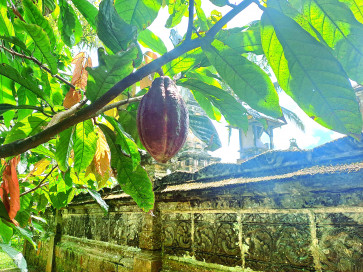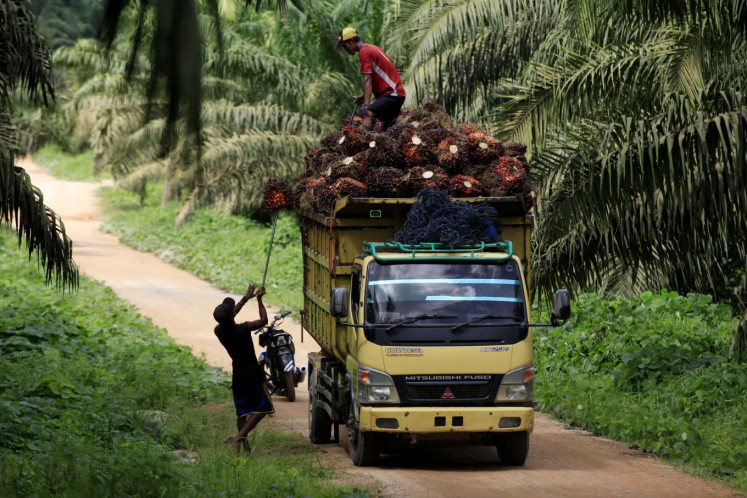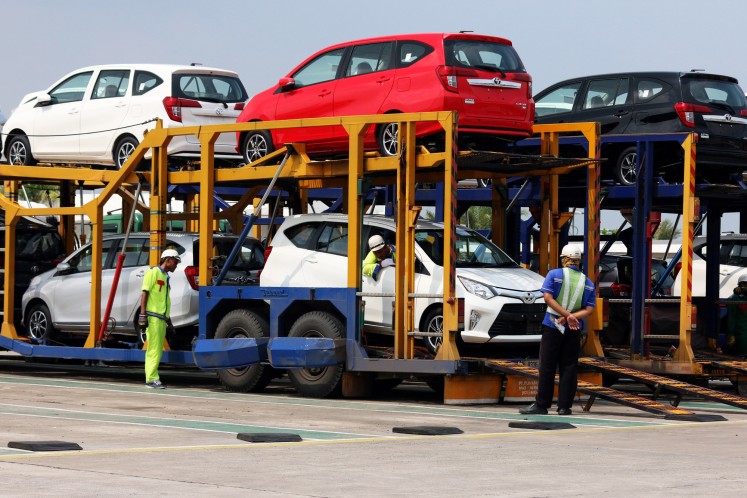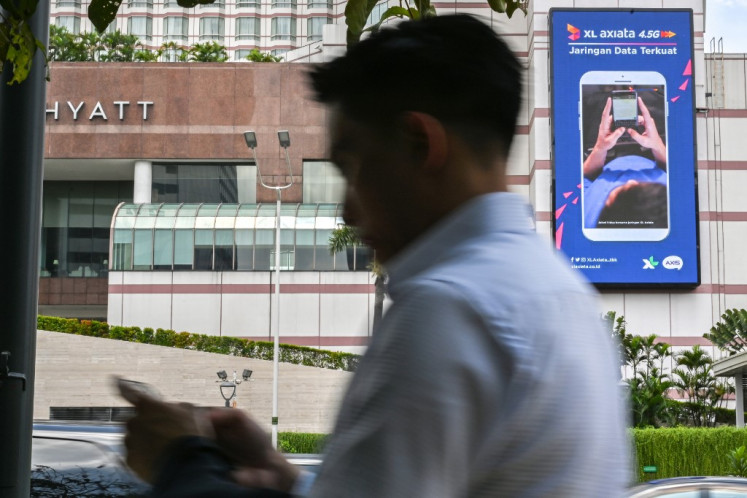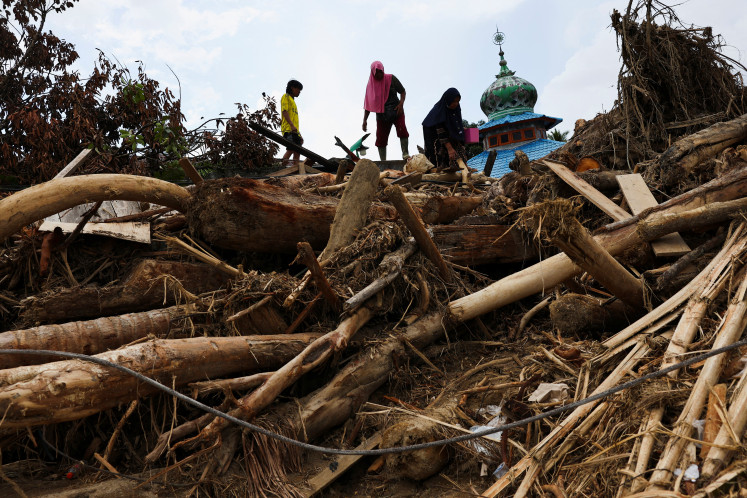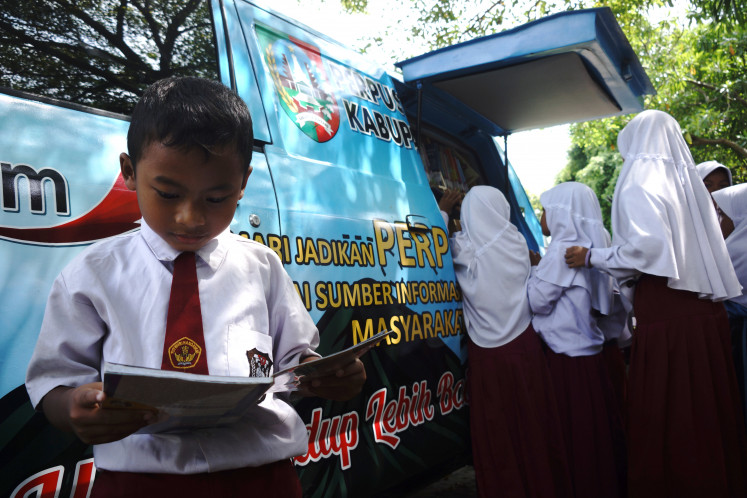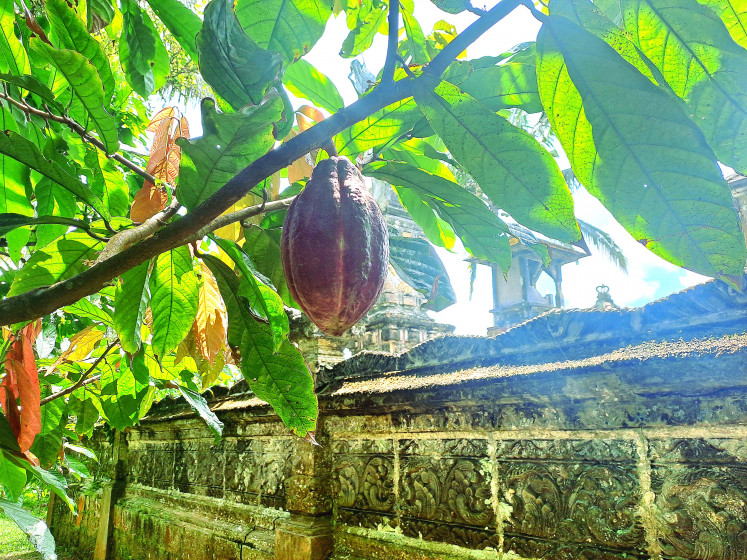Popular Reads
Top Results
Can't find what you're looking for?
View all search resultsPopular Reads
Top Results
Can't find what you're looking for?
View all search resultsA hunger for coal threatens The Heart of Borneo
Lineup: Coal trucks at the Marunda Graha Mineral (MGM) mine near Maruwai
Change text size
Gift Premium Articles
to Anyone
L
span class="caption">Lineup: Coal trucks at the Marunda Graha Mineral (MGM) mine near Maruwai. The mine produced 1.1 million tons of coal in 2013. It is so far Central Kalimantan's second-biggest.
The project could see more than a billion tons of coal dug up from an area of global significance, where indigenous people have lived for generations amid the forests and rivers.
'We heard on the news that Kalimantan was the heart of the world, but we never heard about our village being part of the 'Heart of Borneo',' Maruwai village secretary Timor Banafi says, laughing.
Maruwai, a settlement of around 700 people in the remote north of Central Kalimantan, sits near the border of the Heart of Borneo, a more-than-220,000-square-kilometer zone where Indonesia, Brunei and Malaysia in 2007 agreed to work to improve environmental outcomes and to protect it from deforestation and degradation from industrial agriculture, logging and mining.
The Asian Development Bank has said the Heart of Borneo contains 'some of the world's most important equatorial forests which act as 'lungs of the earth',' describing it as 'one of the few areas on earth where large-scale conservation can still be implemented'.
Despite its global significance, the area is not technically protected.
The World Wildlife Fund (WWF), which is driving the conservation initiative, works with governments and businesses in the zone to improve sustainable land use.
A WWF report released this month said that the Heart of Borneo has lost 10 percent of its forest cover since 2007. More of the area has been licensed to mining and logging companies than has been protected in national parks and nature reserves.
Maruwai, sits within 15 kilometers of the Asmin Koalindo Tuhup and Marunda Graha Mineral coal mines, according to Timor. The mines, two of Central Kalimantan's biggest, have produced 19 million tons of coal in the last 10 years, according to government statistics
Now Maruwai's residents ' indigenous Dayaks who have lived in Kalimantan's forests and rivers for decades ' face a massive expansion of mining in the area as global giant BHP Billiton gears up for the first of a series of planned open-cut coal mines inside the Heart of Borneo.
At home: Setiana, Betrie, Arayati and Regina (left to right) are residents of Maruwai village. Mining has created more problems than it has brought benefits, the four women say. It has polluted the river, increased flooding, swallowed up much of their land and created a kind of dependence on the companies.
The Indomet project, a joint venture with Indonesian miner Adaro Energy, incorporates seven coal contracts of work covering a combined area of 350,000 hectares ' over four-and-a-half times the size of Greater Jakarta ' straddling Central and East Kalimantan, from which BHP estimates more than 1.25 billion tons of thermal and metallurgical coal could be unearthed.
According to the Indonesian Forum for the Environment (Wahli), in addition to releasing huge volumes of carbon dioxide, the mines would disrupt and pollute two major river systems, destroy tens of thousands of hectares of natural forest in an area of high biodiversity and have serious effects on the land and resources of local inhabitants, potentially causing conflict.
The project has already led to conflict in Maruwai, according to villagers, who say they were forced to accept token payments from BHP Billiton for an area of their customary forest eight years ago after police were called in and they were threatened with arrest.
'We were forced to sell our land for Rp 100 [0,08 US cents] per [square] meter,' claimed residents Regina and Arayati. 'If we didn't sell it, the police would arrest us. The land meant a lot to us because we inherited it from our ancestors, and actually it had already generated a lot of money for us'.
Hole in the ground: An empty pit at the Marunda Graha Mineral (MGM) mine, a few kilometers from Maruwai. The majority of mine sites in Central Kalimantan are never remediated after they are mined out, according to Arie Rompas from Walhi.
A spokesperson for BHP Billiton who declined to be named said that the company's activities in relation to land acquisitions for the Indomet project 'were at all times undertaken in accordance with legal and ethical business practices'.
The company's plans did not include mining in any protected forests in Central Kalimantan, the spokesperson said, and development in Central and East Kalimantan would be subject to detailed environmental and social impact assessments, feasibility studies and appropriate permits.
However, local environment groups claim that BHP Billiton lobbied the Central Kalimantan government to have the protected status of forest in some of its contract areas revoked ' a claim the company didn't respond to.
Opinion on coal mining is divided in Maruwai, where around a third of the working-aged male population has jobs in the nearby mines. However, even those who support the industry acknowledge that it has already had negative impacts.
Village head Suwanto is positive about the benefits that mining can bring, pointing to community development initiatives, such as a recently installed water purification system, but says that villagers used to be able to drink the water from the river, and rarely go hunting anymore because their access to forest areas is limited and there are few animals left.
Suwanto doesn't feel a fair share of mining profits have flowed back to the village, where most people live in simple wooden houses and rely on a generator that provides power for only five hours a day.
Other local residents, like Regina, whose says her riverside house and shop have flooded regularly since the companies started operating, oppose the industry outright.
On the move: A woman motors by in a longboat on the Barito River. Many Dayak people in Kalimantan depend on the rivers for their livelihoods.
Mining has polluted the river, increased flooding, deprived people of their lands and created a kind of dependence among villagers, Regina says.
Junior high school biology teacher Eka Ristiani agrees, identifying water pollution, air pollution, flooding and loss of land as the major impacts of coal mining on the village.
'It's a great pity villagers lose their land to the coal companies and get nothing,' Eka says. 'Many people don't have enough to fulfil their daily needs and are not even able to send their children to school.'
The scale of coal mining in Central Kalimantan has so far been limited by the remote location of coal deposits, but that looks set to change.
The central government's 2011 Master Plan for the Acceleration and Expansion of Indonesian Economic Development (MP3EI) designated Kalimantan a 'mining and energy corridor' and outlined plans for the construction of a 'coal railway' in the province to dramatically accelerate extraction of the fossil fuel there.
Indonesia mined 421 million tons of coal in 2013, according to Antara news agency, and, according to Standford University researcher Bart Lucarelli, with less than 1 percent of global reserves, the nation has become one of the world's largest exporters of the commodity, most of which comes from Kalimantan.
While coal has played a significant role in the nation's economic growth in recent years, it is also a major contributor to greenhouse gas emissions.
A Greenpeace report released last year labelled Indonesia's planned increase in coal exports from Kalimantan as one of 14 fossil fuels projects that were the 'worst of the worst' around the world for emissions, and which taken together would push the planet beyond 'the point of no return' on climate change.
'Our lands, our gardens will one day all be sold,' says Eka, who is a mother of two. 'What will the future of our children and grandchildren be, where will we get jobs or find things to do if we have no lands and our natural resources are exploited by mining companies?'
______________
The writer in an intern at The Jakarta Post.
' Photos by Jenny Denton







